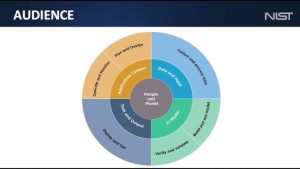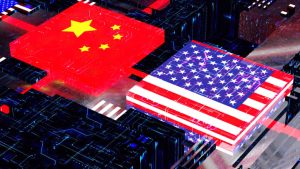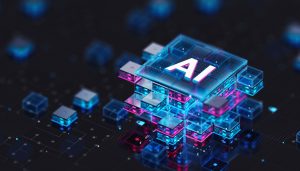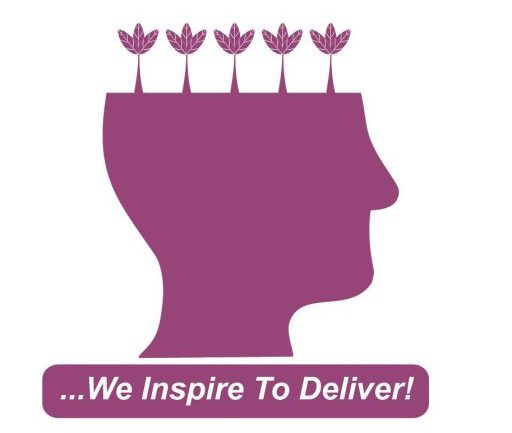Hey, Tech enthusiast! Your Daily Dose of Tech This Wednesday is here @DawentsIT …We Inspire To Deliver!
Your Daily Dose Of Technology News – August 27, 2025.
1. AI, Generative Models And Regulation:

– US/industry moves: The US National Institute of Standards and Technology (NIST) released an update to its AI risk-management framework recommending deployment-stage testing (red teaming), model cards, and model provenance tracking. Separately, a coalition of major cloud and AI vendors published a voluntary safety interoperability pledge for model governance and incident reporting, aimed at avoiding fragmented regulation but drawing criticism from privacy advocates as insufficient.
– EU’s AI Act enforcement signals: European regulators and national authorities are moving from passage to enforcement. Several EU countries announced joint audits of high-risk AI systems used in hiring and public services; the European AI Office published guidance clarifying obligations for “foundation models,” including documentation, transparency to users, and risk mitigation measures. Fines under the Act are not yet being widely levied, but expect scrutiny, mandatory conformity assessments, and more enforcement actions into late 2025.
– New large models and multimodal advances: Multiple labs released new multimodal models with stronger video understanding and long-context reasoning. A notable release from a major open-research consortium demonstrated a 1-trillion-parameter multimodal model optimized for long-context (1M token) ingestion and video-frame-level reasoning; early benchmarks show strong performance on summarization, retrieval-augmented tasks and tool use, but also flagged hallucination modes on fine-grained visual details.
– AI safety incidents and mitigations: Several companies reported isolated incidents of models hallucinating copyrighted text or generating plausible-looking but false legal citations in contract-drafting tools; vendors issued patches introducing stronger retrieval grounding, citation-by-design, and user warnings. Security researchers also disclosed new prompt-injection vectors via shared document formats; vendors pushed model-update mitigations and warned enterprise customers to sanitize publicly shared prompts.
In Other News:
2. Cybersecurity And Privacy:
– Ransomware and supply chain: A new high-profile ransomware campaign affected multiple mid-sized managed service providers; incident response firms warned that attackers are increasingly using supply-chain footholds to hit many customers at once. Managed detection and response (MDR) providers urge multifactor authentication, tighter privileged-access management and zero-trust segmentation.
– Zero-day disclosures: Security researchers disclosed a critical zero-day in a widely deployed VPN appliance; the vendor issued urgent patches and recommended network mitigations. Users and enterprises were urged to patch immediately and monitor logs for exploitation indicators.
– Privacy/legal: A US federal court issued a decision limiting aspects of a state biometric-data law as applied to a major tech company, which may affect ongoing litigation around face recognition and consumer consent. Separately, several US states passed tighter IoT-security labeling rules requiring baseline cryptographic standards for new consumer devices.
3. Space, Communications And Networks:

– Satellite internet and LEO constellations: One of the large LEO operators announced a service expansion to new countries and a partnership with a local mobile carrier for hybrid terrestrial-satellite handoff. Regulators in parts of Africa and South America are revising licensing frameworks to accommodate multi-operator roaming.
– 6G research and testbeds: Universities and consortiums published research demonstrating early 6G use cases (integrated sensing/communication, THz links) in lab testbeds; commercialization timelines remain 2030+, but regulators and industry are already coordinating spectrum planning.
4. Cloud, Software And Enterprise:
– Cloud competition: Google Cloud, AWS, and Microsoft announced further region expansions and new specialized instance types for LLM workloads emphasizing GPU/TPU-like accelerators, cheaper ephemeral capacity, and integrated vector stores. Pricing competition continues, with more pay-as-you-go fine-grained options for inference vs training.
– Open-source governance: A high-profile open-source foundation updated its licensing guidance and contributor policies in response to disputes over commercial use of community models and code. Forks and license clarifications continue across ML frameworks and tooling.
– Productivity software: Several vendors announced AI-assisted features in office suites—automated meeting minutes, smart summarization across long documents and context-aware suggestions for templates. Businesses express interest but also ask for audit trails and data-exposure guarantees.
5. Consumer Tech And Devices:
– Apple: Ahead of its usual September event, Apple seeded beta updates to iOS, macOS and a developer preview of new ARKit features. Rumors persist of a hardware event in September introducing the next iPhone family with satellite messaging enhancements, periscope-telephoto lens on Pro models, and deeper on-device AI features (local large-language model inference for Siri-like functionality). Apple also rolled out tighter privacy labels for on-device ML models in the beta App Store.
– Meta / VR: Meta launched a software update for Quest 3 and newer headsets improving mixed-reality passthrough fidelity and hand-tracking stability, plus a renewed push for PC-VR streaming features. Meta also announced a new developer fund and content-safety guidelines after partner complaints about low monetization and moderation challenges.
– Automotive: Tesla released a beta Over-the-Air update expanding its “Full Self-Driving” beta to more owners in select markets with improved multi-sensor fusion; regulators continue to scrutinize video footage of edge-case failures. Legacy OEMs (BMW, Toyota) announced new EV models with larger battery packs and faster charging, and more partnerships with software firms for in-car OS and subscription features.
Odds And Ends:
6. Regulatory, Geopolitics And Trade:

– US-China technology tensions: The US Commerce Department released updated export control guidance for advanced AI chips and certain semiconductor equipment; China responded with reciprocal measures and accelerated domestic development plans. Companies are navigating permit processes, supply-chain re-routing and “trusted” supply windows.
– Investment screening and subsidies: Several governments expanded semiconductor and advanced-computing subsidies; countries are vetting foreign investment in critical infrastructure more rigorously, which affects cross-border M&A and fundraising for startups.
7. Semiconductors And Hardware:
– TSMC, Samsung and foundry supply: TSMC announced capacity expansion plans in Japan and the U.S. to meet demand for advanced nodes (3nm and below) and packaging services. Samsung confirmed further investment in high-density packaging and gate-all-around transistor R&D. Industry continues to see supply tightness for advanced packaging and substrate materials—customers are ordering earlier and prioritizing high-value chips (AI accelerators, custom SoCs).
– ASML and EUV lithography: ASML extended shipment forecasts for EUV tools but reiterated longer lead times for High-NA EUV systems; customers and governments are accelerating High-NA adoption roadmaps to sustain Moore’s Law for specialized AI chips.
– New AI accelerators: Multiple startups and established firms unveiled updated AI accelerators: a chip architecture optimized for sparse/mixture-of-experts workloads claiming 3–5x energy efficiency gains on large-model inference; another from a major cloud provider introduced a disaggregated accelerator rack for on-demand scalability and lower idle-power cost. Early benchmarks show strong throughput but developers note ecosystem maturity (compilers, libraries) is still evolving.
8. Startups, Funding And M&A:

– Funding: Venture funding remained selective; AI infrastructure, trusted-AI tooling, secure compute enclaves, and semiconductor-test startups attracted the most interest. Seed-stage deals slowed, while later-stage rounds in capital-intensive hardware startups continued but often with strategic corporate backers.
– M&A: A few notable acqui-hires and small strategic acquisitions: cloud vendors acquiring vector-search and retrieval-augmented generation specialists; larger software companies buying niche AI-safety startups. Some deals are motivated by “model governance” IP and data lineage tech.
Summary:
This summary covers the major developments shaping the technology landscape on August 27th, 2025, reflecting advancements across quantum computing, AI, virtual reality, autonomous vehicles, battery technology, and regulatory efforts worldwide.
If you need a summary on any specific topic or more detailed information on emerging tech trends, feel free to ask us @DawentsIT or visit our website at www.dawentsit.com
Follow us for updated news, articles, and videos. Read more on https://dawentsit.com/ #Technology #DawentsIT #TechnologyNews #Tech #AI #GenerativeModels #Regulation #NIST #RiskManagementFramework #EU #Cybersecurity #EUAIAct #Privacy #AllThingsTechnologyNews #AllThingsTechnologyNewsToday #WeInspireToDeliver
